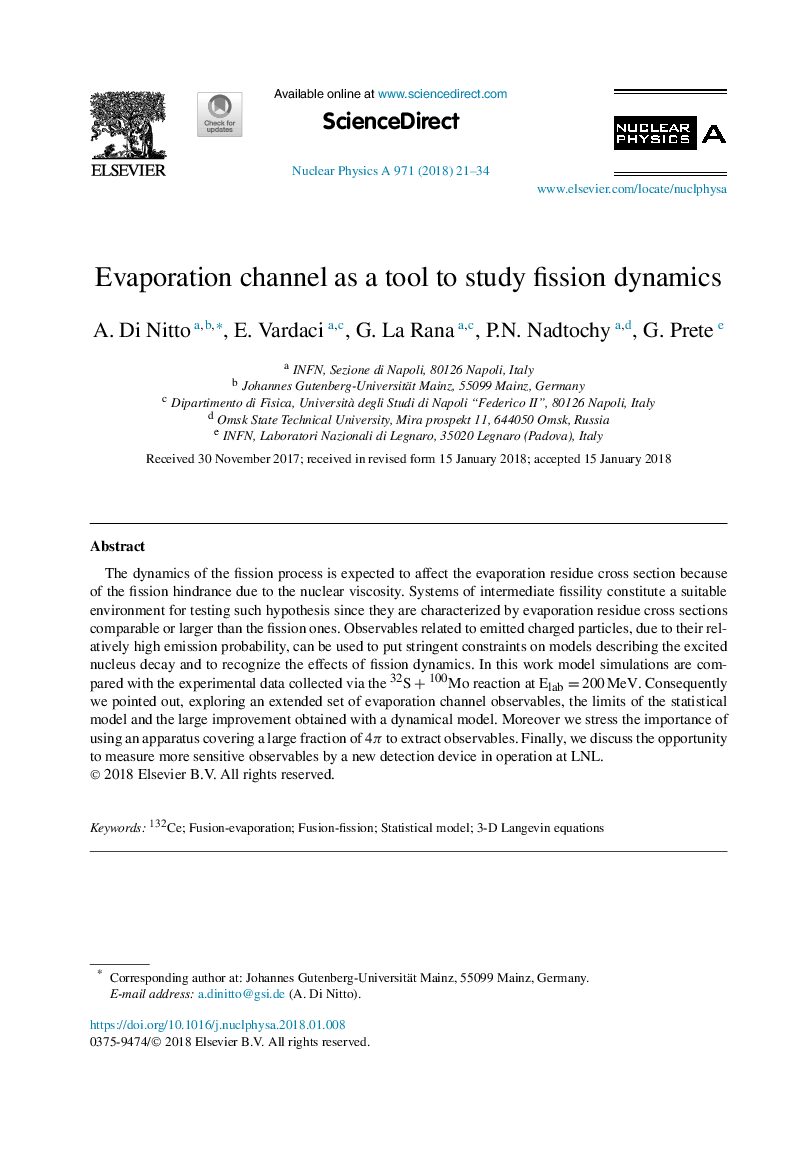| Article ID | Journal | Published Year | Pages | File Type |
|---|---|---|---|---|
| 8182728 | Nuclear Physics A | 2018 | 14 Pages |
Abstract
The dynamics of the fission process is expected to affect the evaporation residue cross section because of the fission hindrance due to the nuclear viscosity. Systems of intermediate fissility constitute a suitable environment for testing such hypothesis since they are characterized by evaporation residue cross sections comparable or larger than the fission ones. Observables related to emitted charged particles, due to their relatively high emission probability, can be used to put stringent constraints on models describing the excited nucleus decay and to recognize the effects of fission dynamics. In this work model simulations are compared with the experimental data collected via the S32+100Mo reaction at Elab=200âMeV. Consequently we pointed out, exploring an extended set of evaporation channel observables, the limits of the statistical model and the large improvement obtained with a dynamical model. Moreover we stress the importance of using an apparatus covering a large fraction of 4Ï to extract observables. Finally, we discuss the opportunity to measure more sensitive observables by a new detection device in operation at LNL.
Keywords
Related Topics
Physical Sciences and Engineering
Physics and Astronomy
Nuclear and High Energy Physics
Authors
A. Di Nitto, E. Vardaci, G. La Rana, P.N. Nadtochy, G. Prete,
